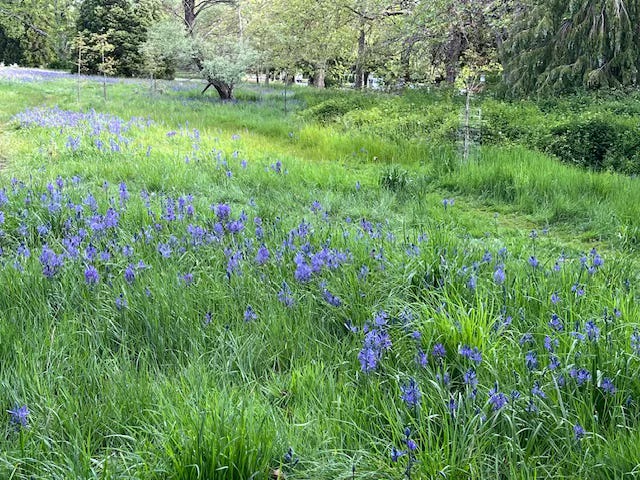
I’m a bit late in posting this—here at Café Botanica things happen when they happen—as I took these photos a couple of weeks ago. These are the fields of camas (Camassia quamash) in Victoria, BC’s Beacon Hill Park. I grew up in Victoria, so I know and remember well the stunning sweeps of purple-blue spikes that would bloom sometime in May in parks and undeveloped properties, often creating carpets under stands of native Garry oak.
Pre-contact, camas was abundant on the northwest coast of North America, thanks to the cultivation of camas meadows by Indigenous people. The bulbs were an important staple and fields were carefully tended—weeded, thinned, de-stoned, and even burned on occasion. The meadows thrived, but now, sadly, most are lost to development, visible only in pockets here and there in protected areas. Even in these places they are vulnerable to introduced and invasive species, such as Scotch broom. (See below.)
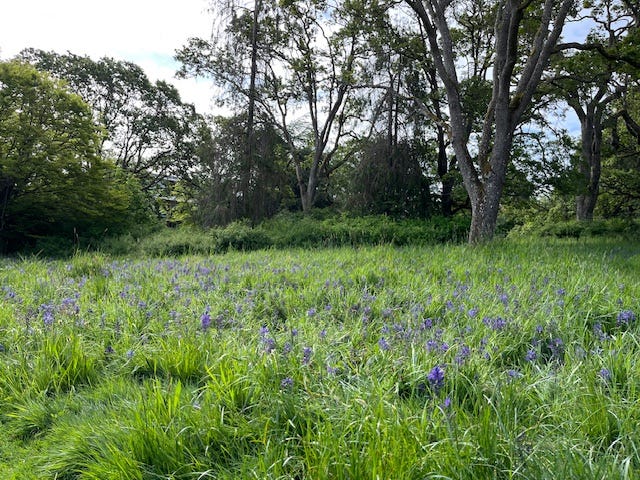
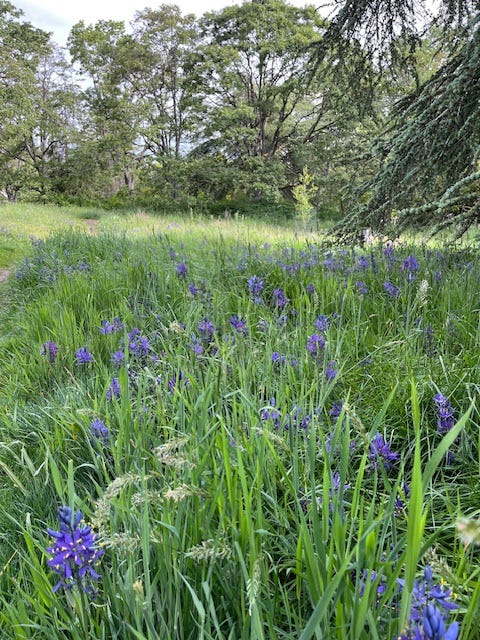
To me, camas was always a wildflower. I’d never thought of it as a plant for a garden. It just belonged in the wild and that was okay with me; I enjoy it where it grows when it blooms. (I did purchase a few legally obtained bulbs a few years ago, but they don’t do well in my garden given that I pretty much live in a rainforest and camas grows best where it’s drier, in the island’s rainshadow climate.)

But then I started watching British gardening shows, listening to British podcasts, and reading books by British gardeners and kept seeing and hearing references to Camassia. Clearly it’s a big deal in UK gardens and, again, it looks like we can thank Scottish plant collector David Douglas for that. (I do realize there are several species of Camassia in cultivation, not just C. quamash.)
Thinking about camas has got me thinking about the words we attach to plants we’ve moved around. In the UK, camas is introduced from the Americas; it’s “non-native,” as are so many of the things we grow in our gardens. We seem to be okay with this when a plant (or animal for that matter—looking at you, Japanese oysters1) is pretty or edible or somehow useful, but as soon as it gets unruly and hard to manage the language shifts to invasive, aggressive, noxious, or even alien.
I’ve spent significant amounts of time on islands—New Zealand’s, Hawaii’s, the one I live on, plus the Gulf Islands nearby—so I’m keenly aware of the damage that introduced species can do. Generally, I’m firmly on the side of eradication of aggressive invasives, when and if that’s possible. At the moment, I’m staring down a patch of Japanese knotweed that’s threatening to overwhelm the school garden I’ve spent years supporting; thinking about whether to leave that Scotch broom bush across the street for the birds or just get out the pruning saw now (Scotch broom is everywhere on the island and it all started with five plants and a Scotsman’s nostalgia for the Old Country); and still digging up remnant yellow flag iris in my yard, which I spent a significant part of a paycheque to remove about five years ago. I do all this not for concern over my garden, but for concern over the natural ecosystems around me. They’re threatened on so many fronts the least we can do it try to control “rambunctious” plants.
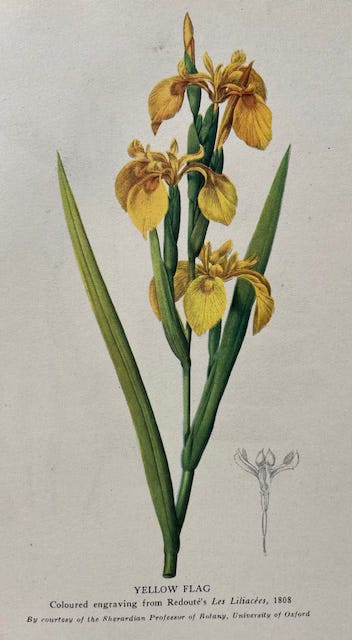
Others have thoughts. Here’s a long essay on the problematic use of the word invasive, for instance; I appreciated this Garden Rant essay and review of the book Love Them to Death: Turning Invasive Species Into Local Economic Opportunities, about the politicization of native/nonnative; and Angela over on Wild Revival Gardening gets into the nuances of aggressive, invasive, noxious, and such, which I’m here for. So, all to say, lots of people are talking about this, thinking about the language we use as we willingly or unknowingly2 move living things around the world.
I was introduced to a new way of framing plants growing where they don’t belong (or “aren’t native to” — See? This is all so fraught!) in March, when I was helping to caretake a camp on the Central Coast of British Columbia. To most people, the location would be isolated wilderness, but, of course, it is very much the centre of home for Indigenous people—in this case the Heiltsuk First Nation—in whose territory we were. Part of my time there was spent unearthing a garden that had gotten a bit out of hand during the COVID years and needed some attention. I had lots of quiet time to think—here I was, in Indigenous territory, weeding a “settler-style” garden that had been eked out of a rainforest that was creeping back in. I appreciated how the Nation embraced all of this. Growing fresh food for the camp, and having children visit the garden to harvest food, is a great thing. And it was done side by side with teachings about the use and cultivation of native plants that grew all around—salmonberry, salal, thimbleberry, and more. Learning about both, taking what works in our modern world, made perfect sense, but some of the language was nuanced and new to me.
Educational materials I found in the library framed the plants in two ways: “Indigenous relatives” and “displaced relatives.”
While I appreciated this perspective, and I thought about it a lot while I was there, I do find it easier to be okay with “displaced relative” when I’m looking at a dandelion, but it’s harder with knotweed or broom because all I can see is how they trample over everything. This challenges me, which is good, as do all discussions about the words we use and the baggage they carry.
I’ve no great takeaway for you here, no bow to wrap this up—other than to encourage everyone to educate themselves about invasive plants in their region, and to not knowingly bring highly invasive plants into your garden or purchase them in bouquets. (Know better, do better and all.) The thought experiment is ongoing for me as is the challenge of trying to think about things differently and to not be so lippy and quick to judge. (And not just in the garden. Ahem.) I did just learn that Japanese knotweed is edible, so perhaps the kitchen is a place to start looking at things from another perspective—right after I write my third letter, with links to the Invasive Species Council of BC, to the landowner of the property where knotweed is growing rampant.
I’d love to hear your thoughts. (And fire me your favourite recipes for knotweed, too!).
Here are some photos of the garden I mention above:
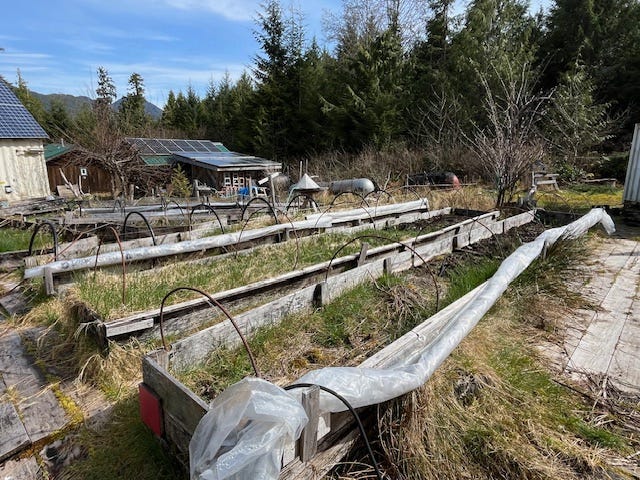
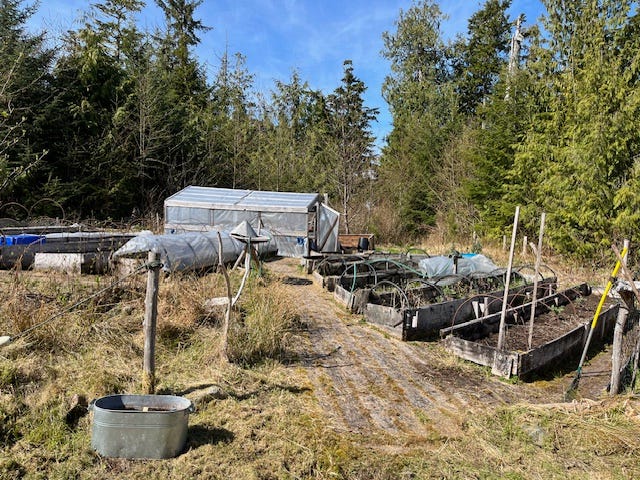
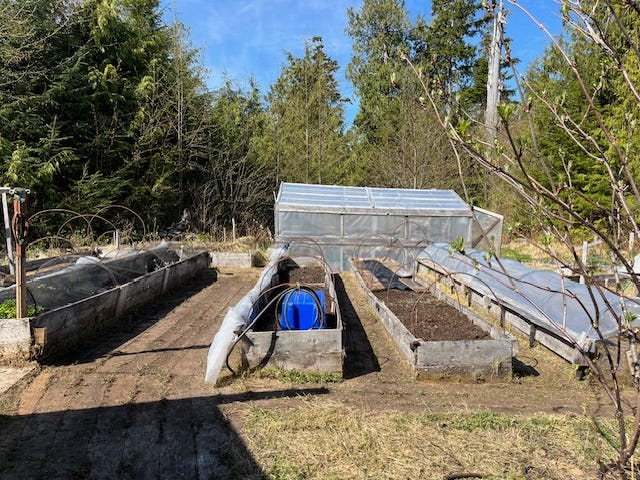
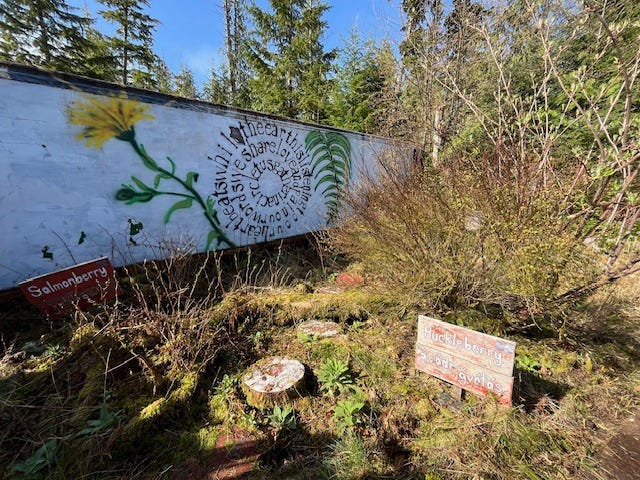
In BC, Japanese oysters are a great example of “look the other way” invasive species. It was introduced and has totally outcompeted that native oysters, but since we eat it—and farm it—it’s an invasive species that seems to get a pass.
Honestly, to see the greatest vector of plant introductions and the problems therein we only need to look in the mirror.




I too am learning about reframing so-called invasive plants with different language. I work with plant material in my artwork and I loved reading about the “displaced relatives” approach.
Great article Adrienne, while on the Sunshine coast late one summer we harvested a few camas bulbs just to see what it was like to eat. We new it could either be white or blue camas. It was so bitter we new it was 'white' and stopped eating. But my brother in-law persisted with eating a bit more and had a psychedelic experience that evening with lots of nausea and vomiting.
John OB